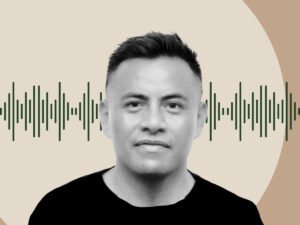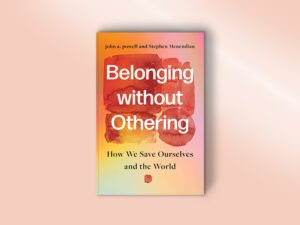
Dr. Akilah Watkins, who previously led the Center for Community Progress and has been a leader in the CEO Circle, a group of community development leaders of color, became president and CEO of Independent Sector in January 2023. Independent Sector is a broad cross-sectoral national membership organization that includes nonprofits, private foundations, and corporate giving programs with a mission to strengthen civil society. In this interview, Dr. Watkins offers her thoughts regarding the organization’s current and future directions.
This interview has been edited for length and clarity.
Steve Dubb: What made you come to Independent Sector? What do you see as its role and its potential?
Dr. Akilah Watkins: I was really interested in this position because I was attracted to the purview that Independent Sector has. I was ready for that challenge and opportunity.
Previously, at the Center for Community Progress, I helped put together the CEO Circle, which brought together a number of new CEOs of color in the field of community development, along with the other members. You know how deeply different and revolutionary that act [is] of pulling together leaders with an intentional purpose of just doing business differently.
What did it mean to build community together? That was way before COVID, way before George Floyd. We just did it because the time called. That was just work that I was doing.
So, when the Independent Sector position came along, it gave me the opportunity to expand work like the CEO Circle. What would it look like to lead a sector of incredible changemakers and leaders and be part of creating an ecosystem where these leaders can flourish?
SD: What does the Nonprofit Stakeholders Engaging and Advancing Together (Nonprofit SEAT) Act do? How did that come about and what has been Independent Sector’s role in that campaign?
AW: This is one of the most important pieces of legislation that the sector is putting forth: HR 3245. We are really excited about this. The nonprofit sector is hugely important both economically and socially to this country. The nonprofit sector contributes 5.7 percent of annual GDP. We are the third-largest private employer in the country. So this is a huge economic impact.
The nonprofit sector hasn’t traditionally thought about itself as a job creator. The Nonprofit SEAT Act is designed to enhance our ability to be able to marshal our resources as a sector to say we need to be sitting down with policymakers as partners as a viable economic engine for this country.
SD: What other legislative priorities does Independent Sector have?
AW: One of the other things is to work with the Bureau of Labor Statistics to get our quarterly employment numbers. Right now, nonprofits, because we haven’t been historically framed as a sector per se, we don’t get our quarterly labor statistical numbers. That’s hard because without those numbers it is hard in a lot of ways to make a case or do research in real time.
There is a lag, a lot of times, with our employment data. That’s one of our legislative pushes is to be able to get the necessary employment and labor statistical data we need just like any other sector. That’s really a major piece of this.
SD: What do you make of such giving trends as the long-term decline in small donors and changes in the type of giving (such as Go Fund Me campaigns that raise money outside of the nonprofit framework)?
AK: At Independent Sector, we have been doing a lot of research around advocacy and trust. What we are finding is that nonprofits are still among the most trusted institutions in the country. Part of why we think is the case is the spatial relations a lot of nonprofits have with the people that experience them. In short, you’re willing to trust an organization that you see in your community.
“We want to do more work…to make nonprofits understand how they are trusted in society [and] the role and responsibility that entails.”
I say all of that to say this: Even though we see more Americans give informally, we are encouraged because nonprofit organizations are still trusted in America. I do think it is important that people still engage with institutions.
Let me be clear: if people want to give, any way they want to give, let’s create opportunities for them. But I don’t think we should give up on institutional models of giving. That is how we deeply institutionalize values around giving, collective values around giving.
So we want to do more work here at Independent Sector to make nonprofits understand how they are trusted in society, the role and responsibility that entails, and for them to be able to leverage the full social capital and full power that they have to advocate and to help Americans to be deeply engaged in their civic and voting responsibilities.
SD: How do you and Independent Sector relate to CEO Circle—and since the charge of Independent Sector is broader than community development, how do you see your connection to CEO Circle from your new post?
AW: The CEO Circle framework is a very interesting one. I am very honored to be part of that, along with my other colleagues. For those who are not familiar, the CEO Circle is a group of leaders of color—Black, Latinx, Southeast Asian—we came together about five years ago. We were all in the community and affordable housing space, and we came together to create frameworks for leadership. We did not want to compete. We wanted to come together in a spirit of partnership.
While groups come together…all the time, this one was special because CEO Circle was created at a time [of leadership transition] in the community development sector. But I dare to say a large portion of the social sector was going through a lot of leadership changes and we started to see more and more leaders of color take the helm of organizations. When that was going on, we thought the Circle was a great opportunity to bring those leaders together to create community.
“We want to be really intentional about creating leaders that have a deep equity and justice background.”
Now that I am at Independent Sector, I am very interested in studying how it worked, why it worked, and how did six to nine leaders of different community development and affordable housing organizations, how did we come together? Historically we would have been competitors. How did we build bridges, connect, even though we were in a very competitive funding environment?
I think that is such an amazing model. The fact that we did it and we held it together for several years and it is still going on today. I don’t want that just to stay in community development.
Sign up for our free newsletters
Subscribe to NPQ's newsletters to have our top stories delivered directly to your inbox.
By signing up, you agree to our privacy policy and terms of use, and to receive messages from NPQ and our partners.
Community development spearheaded it, led it, and created an amazing case study. I want us to study this case study of partnership. What does thoughtful, deep partnership look like? And how do we create different frameworks for leadership? I want to be able to identify those components that we think are scalable, and then be able to share those learnings and scale those learnings across the social sector.
When CEO Circle met in Puerto Rico last year, we pulled together those…affordable housing leaders. We were getting calls from other sectors: education called us, arts called us, philanthropy called us. And they were like: We want to be in this space with you all. We don’t have a CEO Circle. How do we get this? And now that I am in my new position at Independent Sector, I would like to see if we can advance that work.
SD: Can you talk about the NGen Fellows program? Sounds like that is an existing leadership development channel at Independent Sector.
AW: It is. One of the major thrusts of Independent Sector is to create the next generation of leaders for the sector. We know leadership is a key component for success of any organization, of any social movement. We want to be really intentional about creating leaders that have a deep equity and justice background, that have core competencies, that understand organizational development, who can be in community with each other. NGen is our program that does that. It is a very competitive program. Every single year we always get more interest than we have slots. That is one of the things that I hope to grow in this position.
Another concern of mine is the nonprofit workforce. I think we are going to continue to see shifts happen in the nonprofit workforce, meaning that as more retirements are happening, we are going to see people step into leadership positions. And we want to make sure people stepping into leadership positions are prepared.
Leading today and leading with the unique challenges of 2023, leadership is different. We are leading after a worldwide pandemic. A lot of nonprofit leaders are Gen Z and millennials. The social contract between them and work has shifted. And so we want to prepare leaders for the unique challenges of all the tactical things that go along with running an organization, but also the deeply nuanced and contextual world that we now live in, as we think about our relationship to our employees and our constituents.
SD: Could you talk about the relationship between nonprofits and economic justice? We know it is a mixed bag. In many ways, nonprofits are leaders in the economic justice realm and in many ways they fall short. How do you see Independent Sector being not just a voice of the nonprofit sector, but of a nonprofit sector that is committed to racial and economic justice?
AW: Independent Sector is deeply committed to a civil society that promotes equity and justice. What do we do to get there? How is Independent Sector moving in that direction?
We want to invest in the people that make this sector successful. One of my major [program] initiatives is around the nonprofit workforce….It is an equity issue. Do they have good benefits? Do they have health insurance? Can they take care of themselves when they retire? These are all issues that we have all grappled with in this work.
We know the sector, at least according to the latest numbers, is about two-thirds women and a lot of those women are women of color.
My thrust as the new leader of Independent Sector is to make sure that these institutions which we represent realize that a large part of our work is to make sure our constituents reach their fullest goals, and the other part of our work is to make sure our workforce is healthy and want to step up and provide those services. This requires looking at everything from public policy issues that can help create a more inclusive and equitable ecosystem for employers and organizers to hire, all the way to looking at our incentive structure.
We’ve been looking at health insurance; it is rattling organizations across this country. I’ve been doing a listening tour in a few different cities and that has been one of the major themes that we are hearing. We have all come back from COVID. Many of our employers want to be deeply responsible to their employees.
“One thing that COVID allowed for us is that we were boundary-less. That contributed to people getting more opportunity.”
Yet costs are rising. And with the number of donors going down, the number of dollars going into organizations in some cases going down, and organizations having to deal with the real costs of trying to keep people healthy and safe so they can better show up for their constituents, that is a huge equity issue. That is one of the things for Independent Sector that we want to lead on. That’s one of our major focus areas and how we want to do equity and justice.
SD: Are there other priorities you want to lay out?
AW: Another major one is public policy and advocacy. We want to make sure that the sector is strong. That the sector works hand in hand with our public leaders….We carry the needs, the desires, the hopes, the wishes of our members directly to policymakers, as we are developing any sort of policy or legislation as it relates to civil society. So, we want to make sure we have a seat at the table.
Leadership development is another focus area. And being a key convener. Independent Sector is place where there is a cross-sectoral opportunity to come together and be in community.
SD: In this summer’s magazine issue for NPQ, you write that some of the suggestions that nonprofits made at the beginning of COVID need to become universal norms. What do you mean by this?
AW: With respect to universal norms, we are still trying to understand them. We are maybe a year out from COVID. So I think they will unfold. There were some lessons that we learned in COVID that could have some really amazing ramifications for economic justice. One of those things is being spatially agnostic. Being able to hire, retain, [and] attract people from all over this country.
That has been a game-changer for a lot of people. Now I am going to put my housing hat on. When we talk about hot-market areas like New York, DC, Los Angeles, where there are high paying jobs in the sector—even though there are jobs all over this country, I want to be clear about that—but the thing is, it was hard to move to these hot-market cities to be able to work in some of these jobs.
One thing that COVID allowed for us is that we were boundary-less. That contributed to people getting more opportunity. Can you imagine someone in the rural South being able to get a job in Boston during COVID? That’s revolutionary! And you could do it without having to pick up and move and pay so much more of your new salary to secure local housing. That is a very logistic and tactical thing. But it has huge ramifications….From an economic justice perspective, that may be something we want to look at.
The other thing, I would be remiss if I didn’t talk about this, we saw foundations really engage with nonprofits around general operating support, with increased administrative rates for funding to cover administrative costs for organizations. In so many ways, I think that COVID helped to accelerate a conversation that we needed to have on a national scale. Organizations need those flexible dollars in order to meet the basic needs of their audience. I think that’s another thing that came out. I do think it has huge ramifications for economic justice.
I think that those conversations don’t have to end. We are still engaged with the philanthropic community around the importance of general operating support, having flexible dollars so nonprofits can be responsive in real time.
These are all ways that we have had to adjust. I think they do have some lessons and opportunities for us to pull them forward as ways of working and ways to engage.













